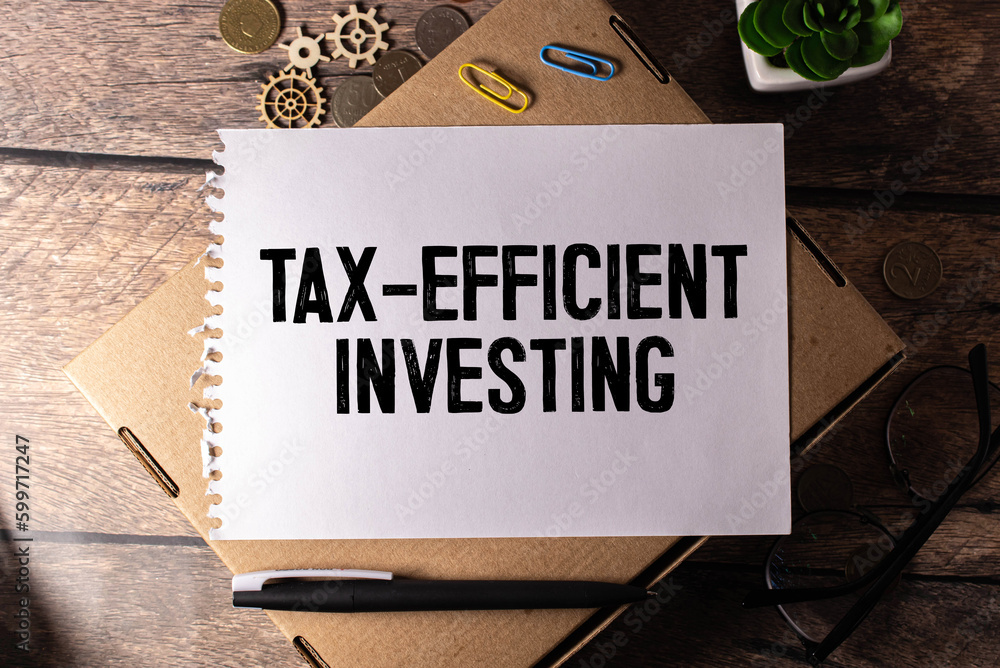Investing wisely goes beyond picking the right stocks or funds; it involves optimizing your returns by strategically managing the impact of taxes on your investment portfolio. Tax-efficient investing is a crucial aspect of wealth accumulation, as minimizing tax liabilities allows you to keep more of your investment gains. In this guide, we’ll explore key strategies to maximize returns while minimizing taxes, empowering you to make informed decisions and build a tax-efficient investment portfolio.
- Understand Your Tax Bracket
One of the foundational principles of tax-efficient investing is understanding your tax bracket. Different types of income, such as capital gains and dividends, may be taxed at varying rates depending on your overall income. By understanding your tax bracket, you can tailor your investment strategy to optimize for tax efficiency.
- Utilize Tax-Advantaged Accounts
Take full advantage of tax-advantaged investment accounts such as 401(k)s, IRAs, and Roth IRAs. Contributions to these accounts may be tax-deductible or grow tax-free, providing a significant advantage in terms of tax efficiency. Maximize your contributions to these accounts within the limits set by the IRS.
- Tax-Loss Harvesting
Tax-loss harvesting involves strategically selling investments that have experienced a loss to offset gains in other parts of your portfolio. By doing so, you can minimize capital gains taxes. Be mindful of wash-sale rules, which prevent you from repurchasing a substantially identical security within 30 days.
- Hold Investments for the Long Term
Capital gains on investments held for more than one year qualify for long-term capital gains rates, which are often lower than short-term rates. Consider a buy-and-hold strategy to take advantage of favorable long-term capital gains tax rates.
- Dividend Tax Efficiency
Not all dividends are taxed equally. Qualified dividends are subject to lower tax rates than ordinary dividends. Invest in stocks or funds that pay qualified dividends to enhance the tax efficiency of your portfolio.
- Strategic Asset Location
Distribute your assets strategically across taxable and tax-advantaged accounts. Place tax-efficient investments in taxable accounts and less tax-efficient assets in tax-advantaged accounts. This helps optimize the tax treatment of each investment type.
- Municipal Bonds for Taxable Accounts
Consider municipal bonds for your taxable accounts. Interest income from municipal bonds is often exempt from federal taxes and may also be exempt from state and local taxes, depending on your residence. Municipal bonds can provide a tax-efficient source of income.
- Qualified Opportunity Zones
Investing in qualified opportunity zones can provide tax benefits. These zones, designated by the IRS, offer tax deferral and potential reductions on capital gains. Be sure to understand the specific rules and requirements associated with opportunity zone investments.
- Tax-Efficient Fund Selection
Choose tax-efficient funds that actively manage their tax implications. Some funds employ strategies to minimize taxable distributions, such as tax-loss harvesting within the fund itself. Look for funds with a history of tax efficiency.
- Consider Tax-Managed Funds
Tax-managed funds are designed with a focus on minimizing taxes for investors. Fund managers actively make decisions to reduce capital gains distributions and improve after-tax returns. These funds can be particularly beneficial in taxable accounts.
- Stay Informed About Tax Law Changes
Tax laws are subject to change, and staying informed about potential adjustments can help you make timely decisions to optimize your tax position. Consult with a tax professional to understand how legislative changes may impact your investment strategy.
- Employ Tax-Efficient Withdrawal Strategies in Retirement
When you begin withdrawing from your retirement accounts, implement tax-efficient strategies. Consider factors such as Required Minimum Distributions (RMDs), Social Security benefits, and the timing of withdrawals to minimize your tax liability during retirement. Read more here https://planeasy.com/savings
- Educate Yourself About Tax Credits
Explore available tax credits that can further enhance your overall tax efficiency. Tax credits, such as the Saver’s Credit for retirement contributions, can directly reduce your tax liability. Understanding and utilizing these credits can contribute to a more tax-efficient investment strategy.
- Use Tax-Efficient Investment Tools
Explore investment tools that offer tax advantages, such as exchange-traded funds (ETFs). ETFs often have lower turnover, resulting in fewer capital gains distributions compared to actively managed mutual funds.
- Consult with Tax and Financial Professionals
While these strategies provide a solid foundation for tax-efficient investing, consulting with tax and financial professionals is crucial. They can offer personalized advice based on your unique financial situation, goals, and the latest tax laws.
Conclusion
Tax-efficient investing is not a one-size-fits-all endeavor. It requires a thoughtful and customized approach based on your individual circumstances. By incorporating these strategies into your investment plan, you can maximize your returns while minimizing the impact of taxes on your wealth. Remember that tax efficiency is an ongoing consideration that should evolve with changes in your financial situation and the broader tax landscape. Stay informed, seek professional advice, and proactively manage the tax implications of your investments to build a more tax-efficient and resilient portfolio.





